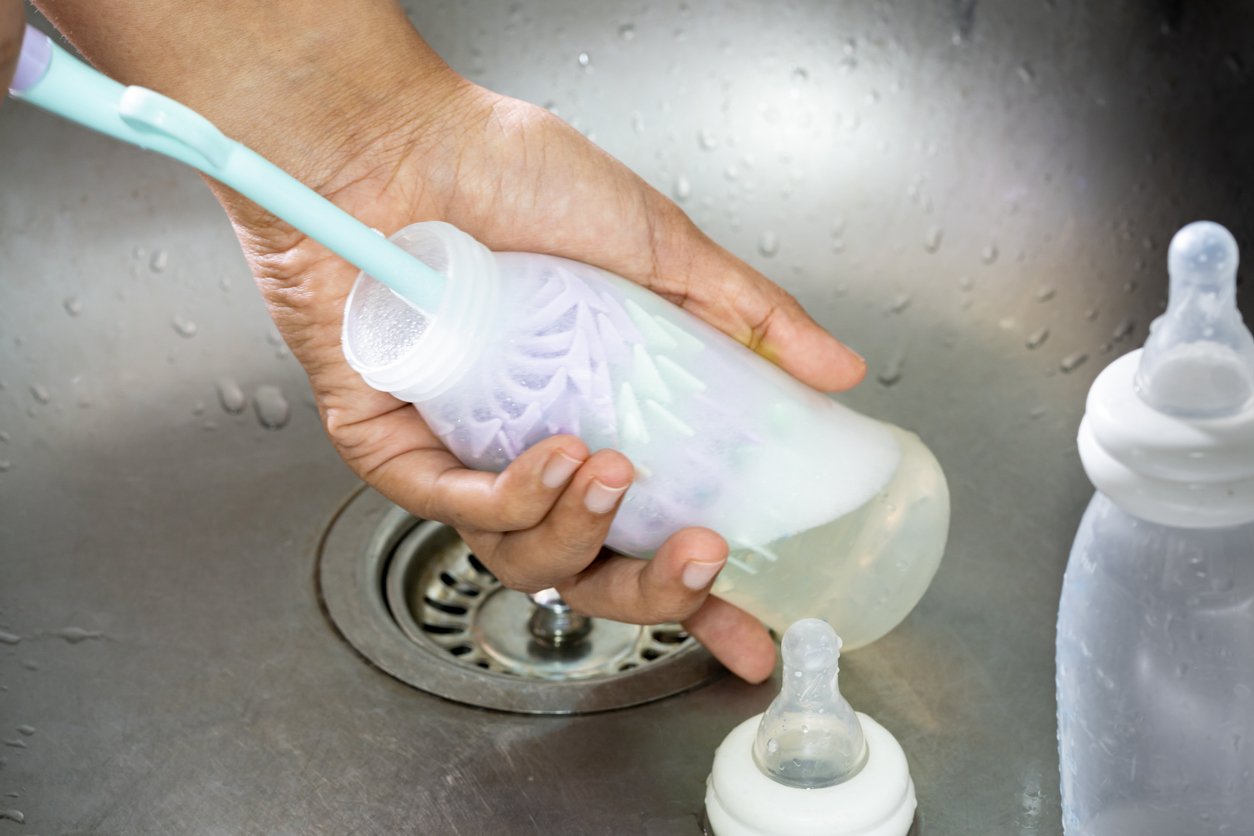Keeping baby feeding equipment clean and sterile is essential to ensure the health and safety of your baby. Babies have delicate immune systems, and even a small amount of bacteria or germs can lead to illness. Maintaining cleanliness is a must, whether at home or on the go. Here are some essential tips for keeping your baby’s feeding tools clean and sterile.

Wash Feeding Equipment Immediately After Use
One of the best practices for keeping baby bottles and other feeding tools clean is to wash them immediately after use. Allowing milk or formula to sit in the bottle for extended periods can encourage bacteria growth. If washing immediately isn’t possible, it’s a good idea to rinse the bottles with warm water to prevent milk from drying and sticking to the bottle’s surfaces. When you can, thoroughly clean the bottle with soap and water to remove any remaining residue.
Use a Bottle Brush for Thorough Cleaning
When cleaning, it’s important to reach every part of the bottle, especially the hard-to-reach areas like the neck and bottom. A bottle brush is a helpful tool for scrubbing inside the bottle, ensuring that no milk or formula is left behind. Be sure to use a brush specifically designed for baby bottles, as regular kitchen brushes may be too harsh and damage the bottle’s surface. The bottle brush also works well for cleaning bottle nipples and other small parts.
Disassemble All Parts Before Cleaning
Many baby bottles come with multiple parts, such as the bottle itself, a nipple, and sometimes a vent system. To clean the bottle thoroughly, always disassemble all parts before washing. Cleaning the parts separately ensures that every piece is properly cleaned, and no milk or formula is trapped in hidden areas. Pay special attention to the bottle’s nipple and vents, as these small parts can harbour bacteria if not cleaned properly.
Sterilise Bottles Regularly
In addition to regular washing, it's important to sterilise baby bottles, especially for new-borns. Sterilising feeding equipment helps kill any remaining germs that may not have been removed through washing. There are several methods to sterilise bottles, including boiling them in water for a few minutes, using a steam steriliser, or using sterilising tablets. Sterilising once a day is usually sufficient, but parents may want to sterilise more frequently during times when the baby is ill or if there has been a lapse in regular cleaning.
Use a Separate Drying Rack for Baby Items
After cleaning and sterilising the bottles, it's important to dry them properly. Using a separate drying rack specifically for baby items is recommended. This prevents cross-contamination with other kitchen items, which may carry germs or bacteria. Baby bottles should be air-dried thoroughly before being put away or reused. Storing damp bottles can lead to the growth of mould or mildew, which can be harmful to the baby's health.
Avoid Using Dishwashers for Bottles with Small Parts
While dishwashers can be convenient, they are not always the best option for cleaning baby bottles, especially those with small parts like vents or anti-colic systems. These parts may not get cleaned properly in the dishwasher, as they can trap food particles or milk residue. Handwashing and sterilising the bottles manually ensures a more thorough cleaning. Using a dishwasher, use a top rack and a baby-safe cleaning cycle designed for bottles.
Use Safe and Gentle Cleaning Products
When cleaning baby bottles, it’s important to use cleaning products that are safe and gentle. Harsh chemicals or strong detergents can leave residue on the bottles that may harm your baby. Opt for baby-safe dish soaps that are free of chemicals and fragrances. These products are designed to remove milk residue while being gentle enough for your baby's sensitive system. Parents can trust brands like Dr Talbot's for baby-safe dish soaps, which are free from harsh chemicals and fragrances, ensuring that baby bottles are cleaned without leaving harmful residue.
Be Mindful of Traveling with Baby Bottles
Keeping baby bottles clean and sterile can be more challenging when travelling or feeding on the go. Parents should consider carrying a portable bottle-cleaning kit with a small bottle brush, soap, and sterilising wipes. Choosing the best baby bottles for travel and on-the-go feeding can make a big difference, as some are designed to be easier to clean and sterilise in different environments.
Keeping baby feeding equipment clean and sterile is essential for your baby’s health and well-being. Parents can prevent the growth of harmful bacteria and germs by washing feeding tools immediately after use, using bottle brushes for thorough cleaning, and regularly sterilising all parts. Additionally, using gentle cleaning products, drying items on a separate rack, and being mindful of cleanliness while travelling ensures that your baby's feeding tools are always safe and ready for use.
This article is part of the HealthManagement.org Point-of-View Programme.





